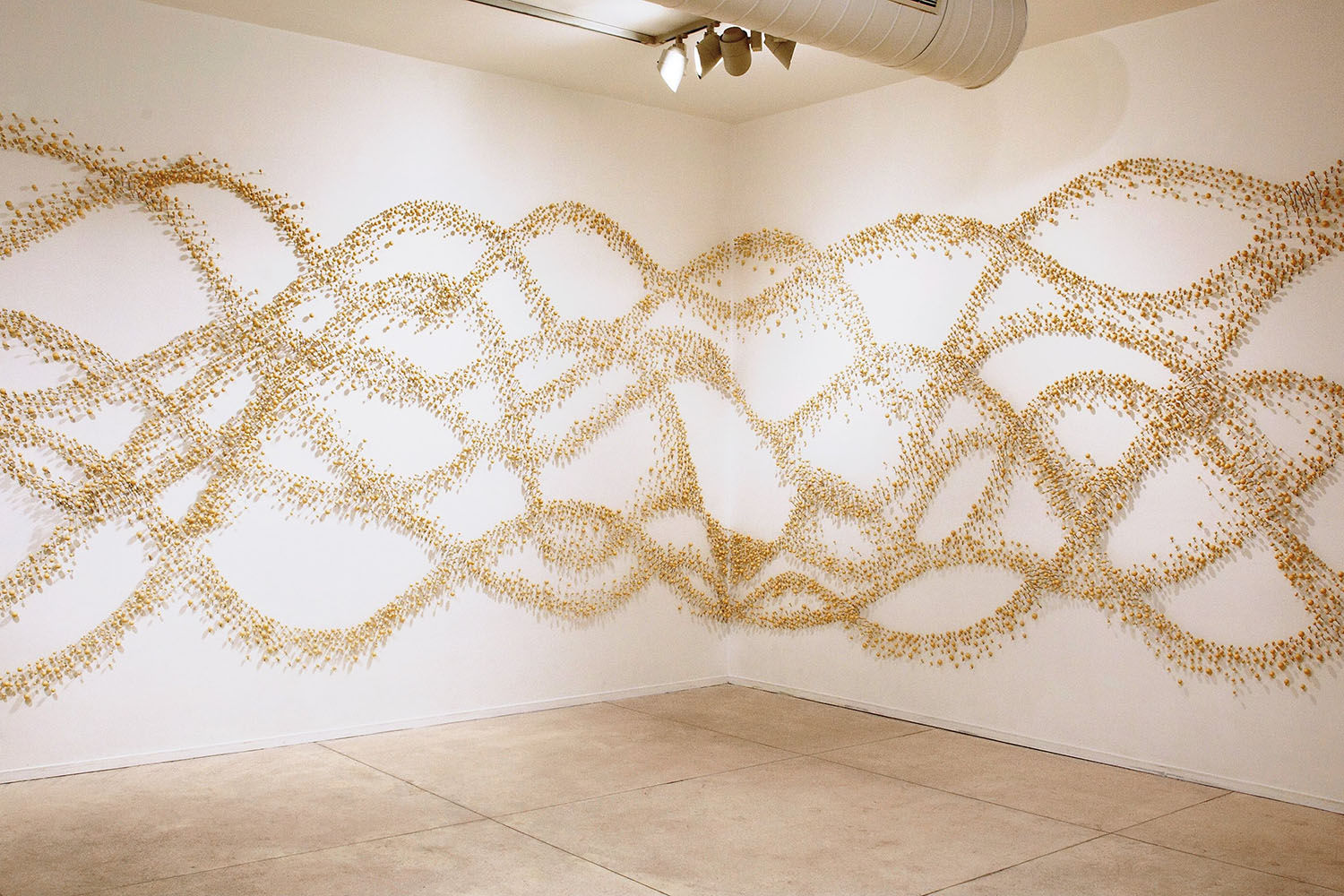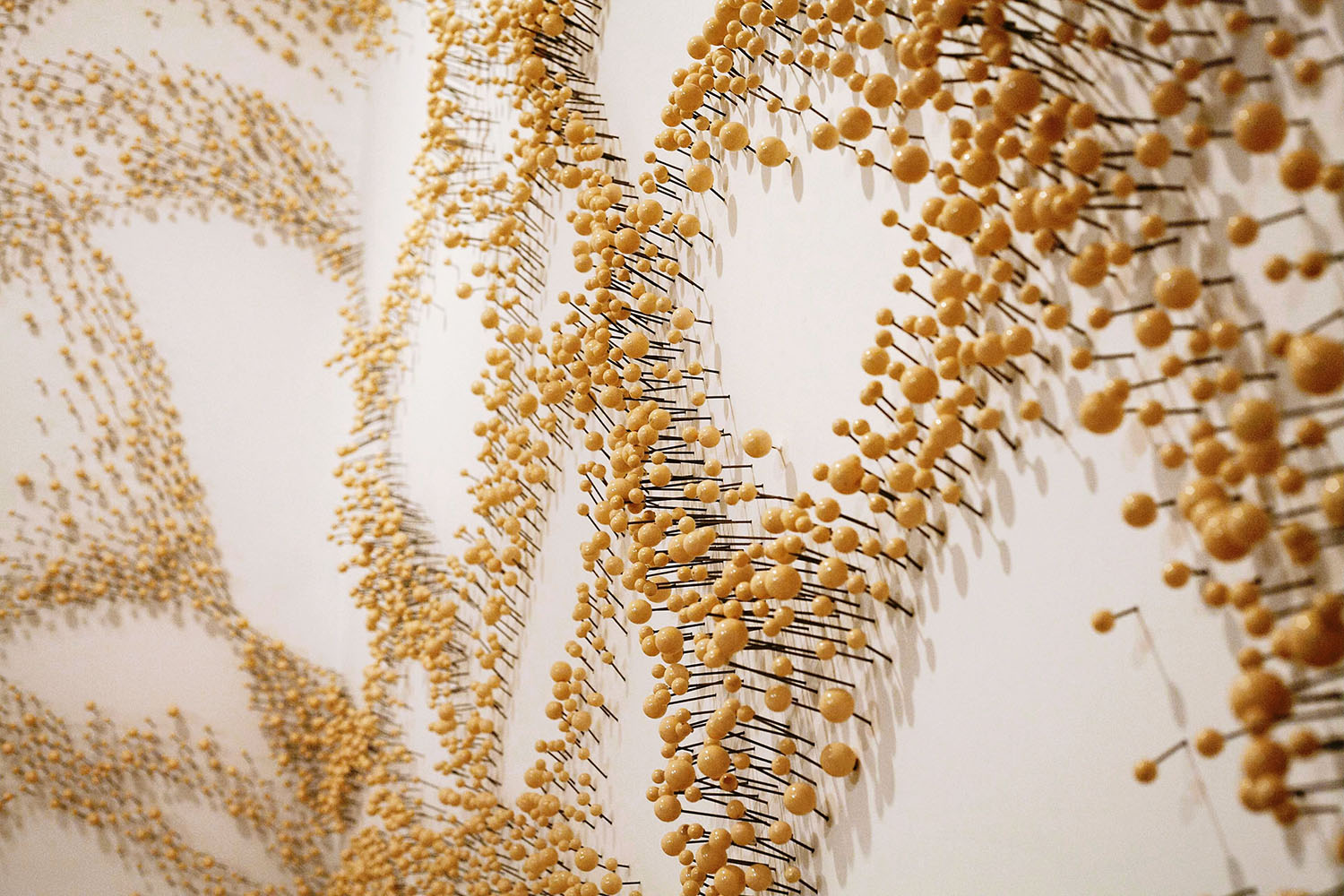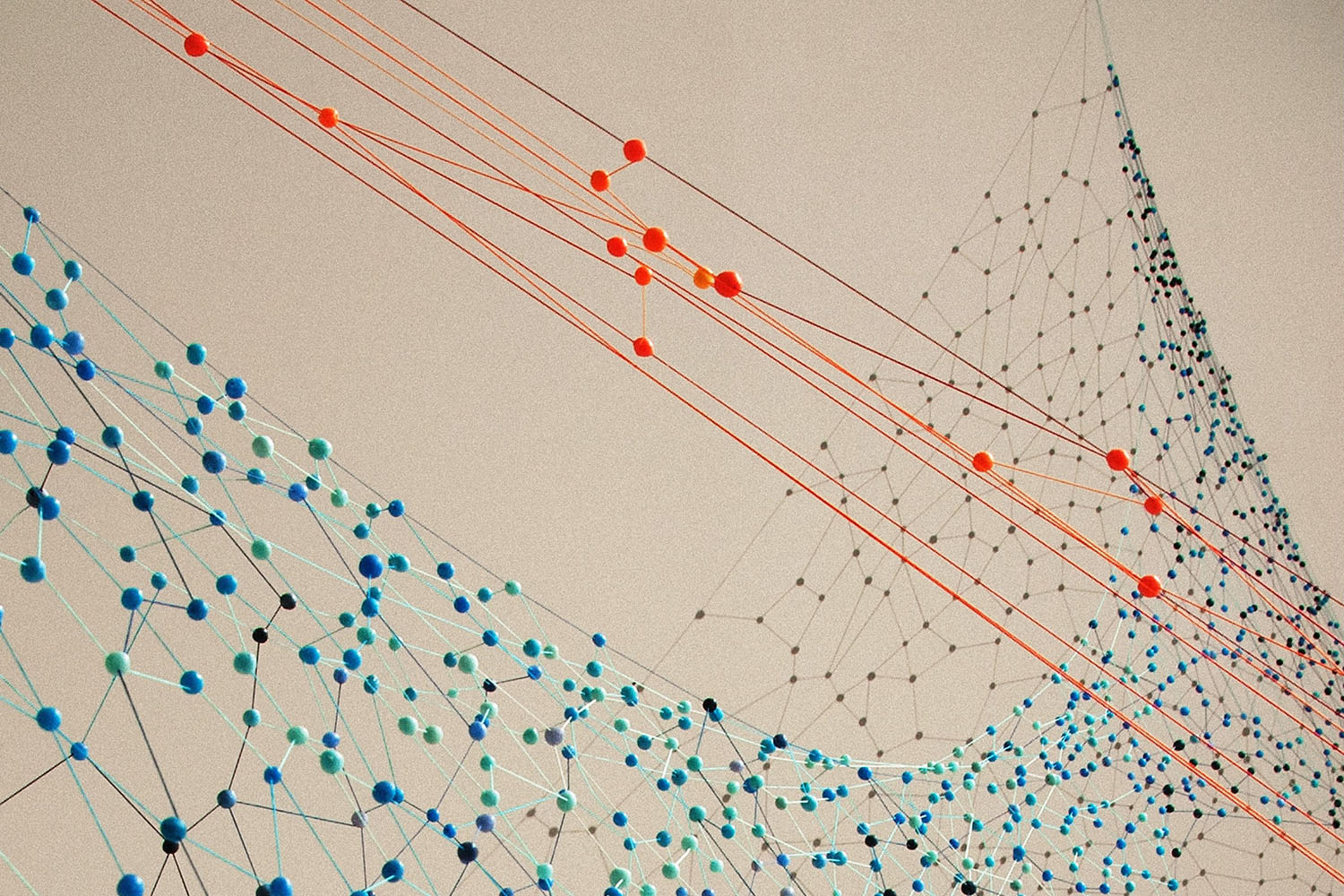ARTICLE
Ranjani Shettar
An abstractionist, Ranjani Shettar is known for her nature-inspired large-scale installations and her attention to the delicate interactions between material and space. She combines industrial materials with natural elements and uses local craft traditions to suggest the uneasy and fragile coexistence of nature with technology and industry with tradition.
Born in Bengaluru, Karnataka, Shettar obtained a BFA in sculpture from the College of Fine Art, Karnataka Chitrakala Parishath, Bengaluru, in 1998, followed by an MFA in sculpture from the Chitrakala Institute of Advanced Studies in 2000. In 2006, she attended an artist residency at ArtPace in San Antonio, Texas, after which she exhibited extensively in the United States.
Shettar’s work reflects her abiding fascination with the natural environment, particularly in rural Karnataka, where she grew up. She uses a range of commonly found everyday materials — such as beeswax, cotton, sawdust, mud, tamarind kernel paste, clay, lacquered wood, resin, India Ink, PVC, silicone and metal — to create surreal forms that evoke natural formations and phenomena such as spider webs, beehives, tree canopies and constellations. Her work is characterised by dynamicity and seeming-weightlessness. A notable recurring feature in her body of work is the use of beeswax as the primary material and medium of her sculptural installations.
In works such as Invitations and Thousand Room House from her solo exhibition Home (2000), Shettar explores the concept of shelter, creating sculptural abstractions of natural structures such as beehives, cocoons and honeycombs. The work Transitions (2003) is an interpretation of the forms and transitory states of microorganisms and cells, especially during reproduction and division. She evokes these forms through suspended, amorphous pieces of neem wood on which red gulaganji (rosary pea) seeds are attached in dense clusters to suggest cell nuclei. The work IN BLOOM (2004) consists of wooden red lacquered beads hanging in clusters on a fishing line, recalling the common sight of bougainvillaea bushes in the receding green cover in urban centres. Shettar produced a delicate woven cobweb-like installation made of beeswax balls and tea-dyed strings in Vasanta (2004), Just a bit more (2006) and Tuntoroo (2014), which resemble undulating curtains of finely networked nodes and connections. She has also worked with industrial and metal materials, such as stainless steel, bronze and automo pativeint, in works such as Fire in the Belly (2007), Me, no, not me, buy me, eat me, wear me, have me, me, no, not me (2007) Sun sneezers blow light bubbles (2007–08), Heliotropes (2005–11) and Seven ponds and a few raindrops (2017). In the works Sun sneezers and Seven ponds, she incorporates the knotting and fastening techniques used in the indigenous doll-making craft of Kinnal, Karnataka. She has also worked extensively with wood, notably in the works Liquid Walk on my wall (2008), Harp (2009), Torque (2013), Tendu (2013–14), Between the sky and earth (2013–14), Peppercorn (2018) and From under and above (2018–19).
She held her first solo exhibition in New York, at the Talwar Gallery — by whom she has since been represented — in 2004, and in 2018, earned the unique distinction of being the only living artist to have held a solo show at the Metropolitan Museum of Art (The Met). She has held exhibitions in other notable venues, such as Talwar Gallery, New Delhi; Dr Bhau Daji Lad Museum, Mumbai; Institute of Contemporary Art, Boston; San Francisco Museum of Modern Art (SFMoMA), California; Museum of Modern Art , New York; The Phillips Collection, Washington DC; and the Hermes Foundation, Singapore. Shettar’s works have also been featured in group exhibitions at the Khoj International Artists’ Association and Kiran Nadar Museum of Art (KNMA), New Delhi; Walker Art Centre, Minneapolis; Wexner Center for the Arts, Columbus; Orange County Museum of Art, Newport Beach; Carnegie Museum of Art, Pittsburgh; the Pizzuti Collection, Ohio; Art Tower Mito, Japan; and Fondation Cartier pour l’art contemporain, Paris. Her work has been featured in several biennales, including those in Sydney (2006), Lyon (2007), Sharjah (2007), Liverpool (2010) and Moscow (2013). They are part of the permanent collections of public and private institutions, including the Met, SFMoMA, MoMA, KNMA, the Guggenheim Museum and the Walker Art Center. She received the Sanskriti Award in 2007 and the Aditya Vikram Birla Kalakiran Puraskar in 2011.
As of writing, Shettar lives and works between Shivamogga and Bengaluru, Karnataka, with her husband, artist Srinivas Prasad.
Bibliography
Our website is currently undergoing maintenance and re-design, due to which we have had to take down some of our bibliographies. While these will be re-published shortly, you can request references for specific articles by writing to hellomapacademy@map-india.org.










